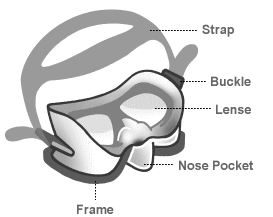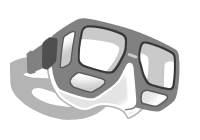|
 Mask Mask
In order to clearly see underwater, it is necessary to have airspace between
your eyes and the water around you. Masks employ lenses made from tempered
glass. It is also possible to have prescription lenses made for your mask.
Also, your nose always needs to be contained inside the airspace area of
the mask, so swimming goggles are not suitable for diving. To choose the
best fitting mask, we hold it to our face, lightly inhale using our nose,
and release our hold to see if a firm seal can be maintained. The field
of vision should be as wide as possible. For its ability to fit well and
to keep out water as well as its durability, silicon rubber masks are popular.
 |

2-Lense Mask

1-Lense Mask

Multifaceted Mask
|

